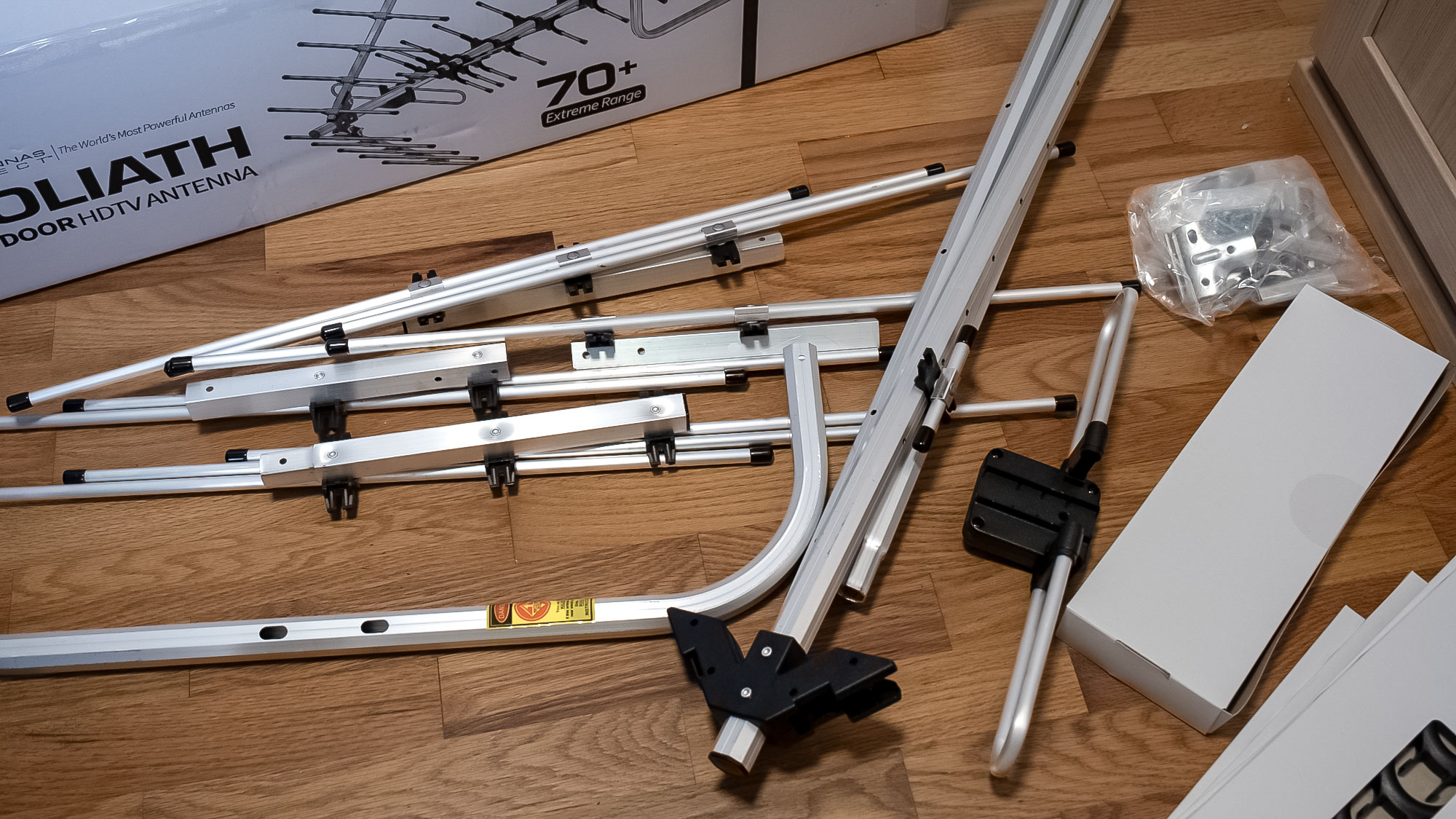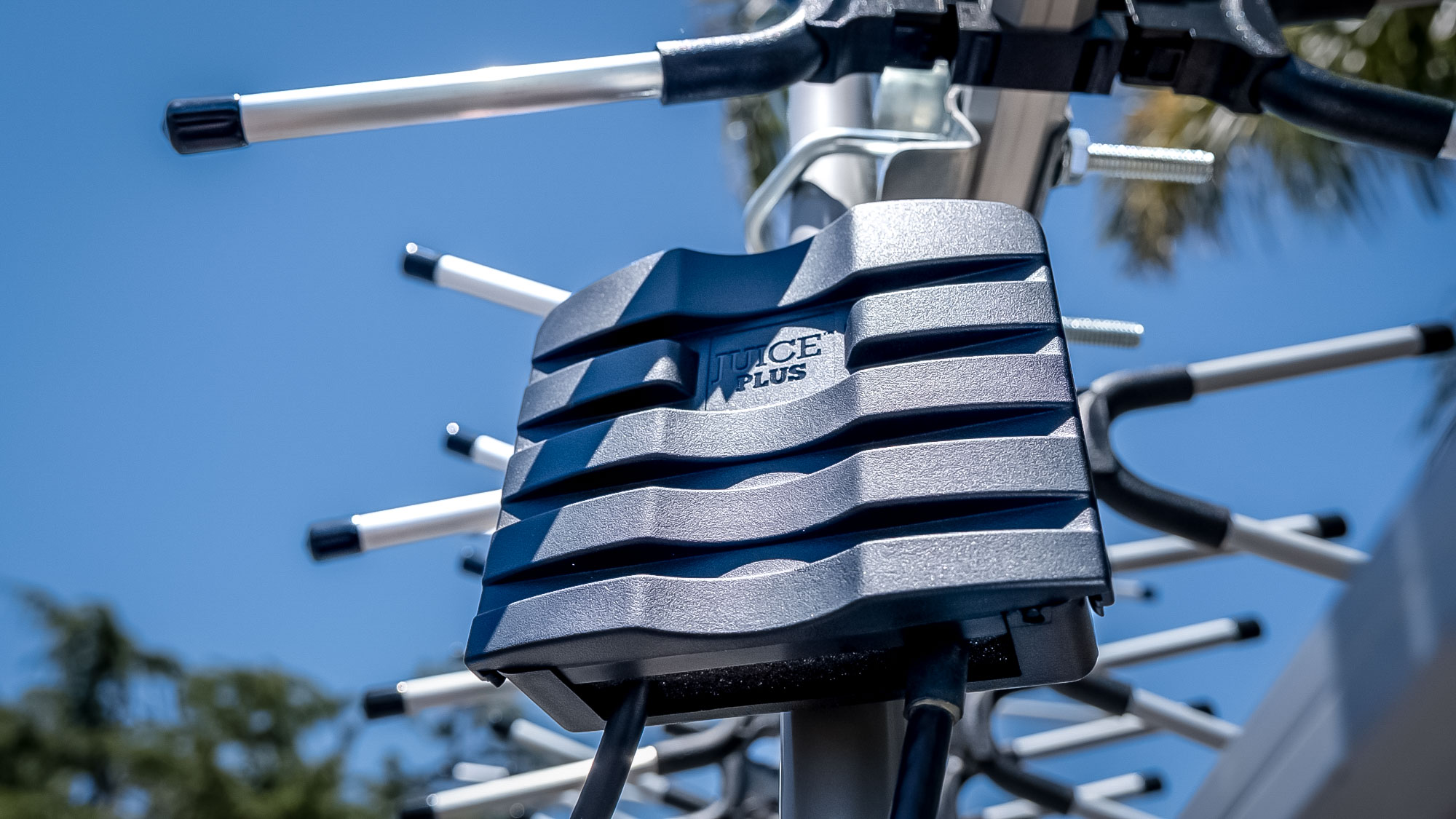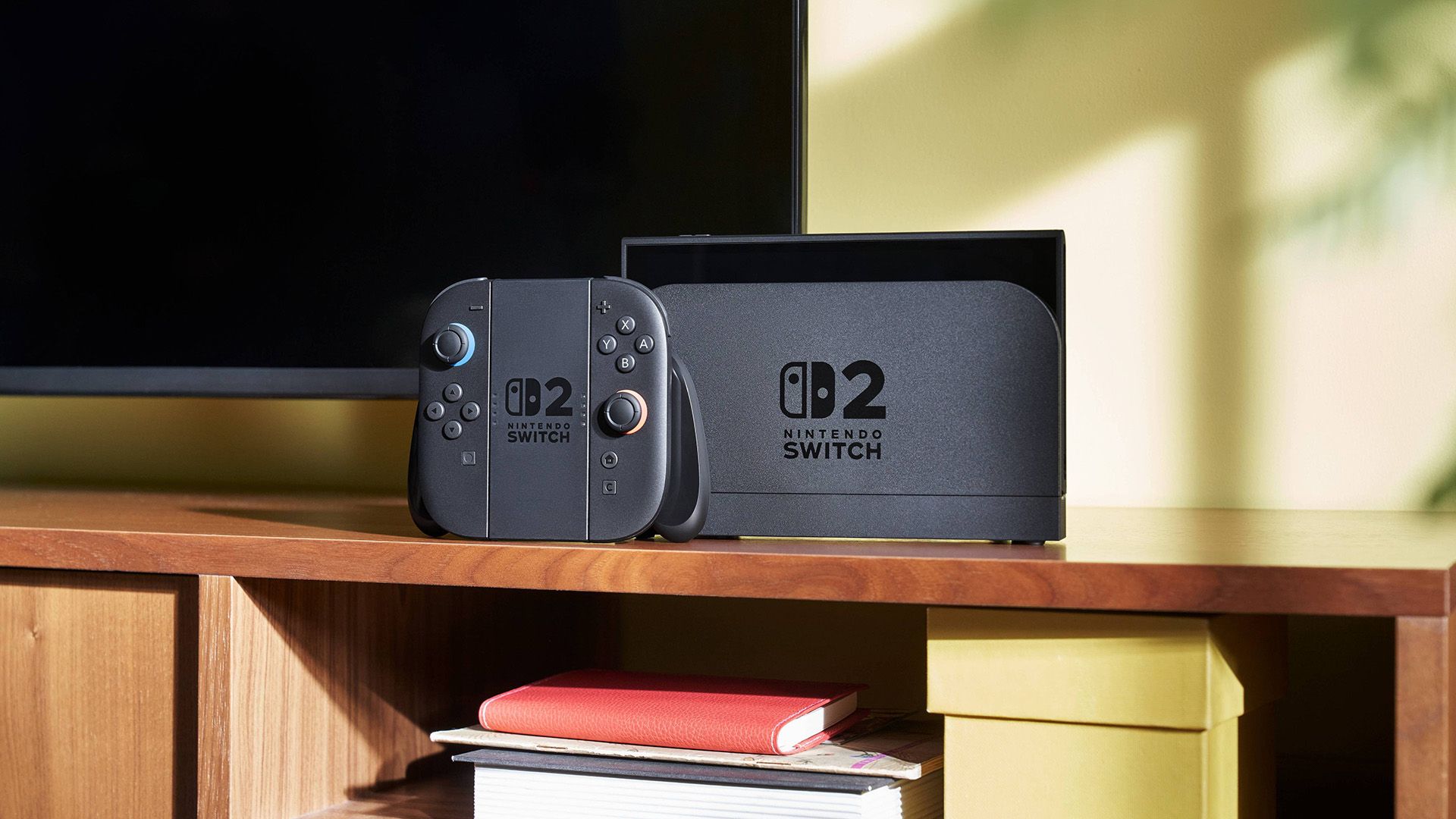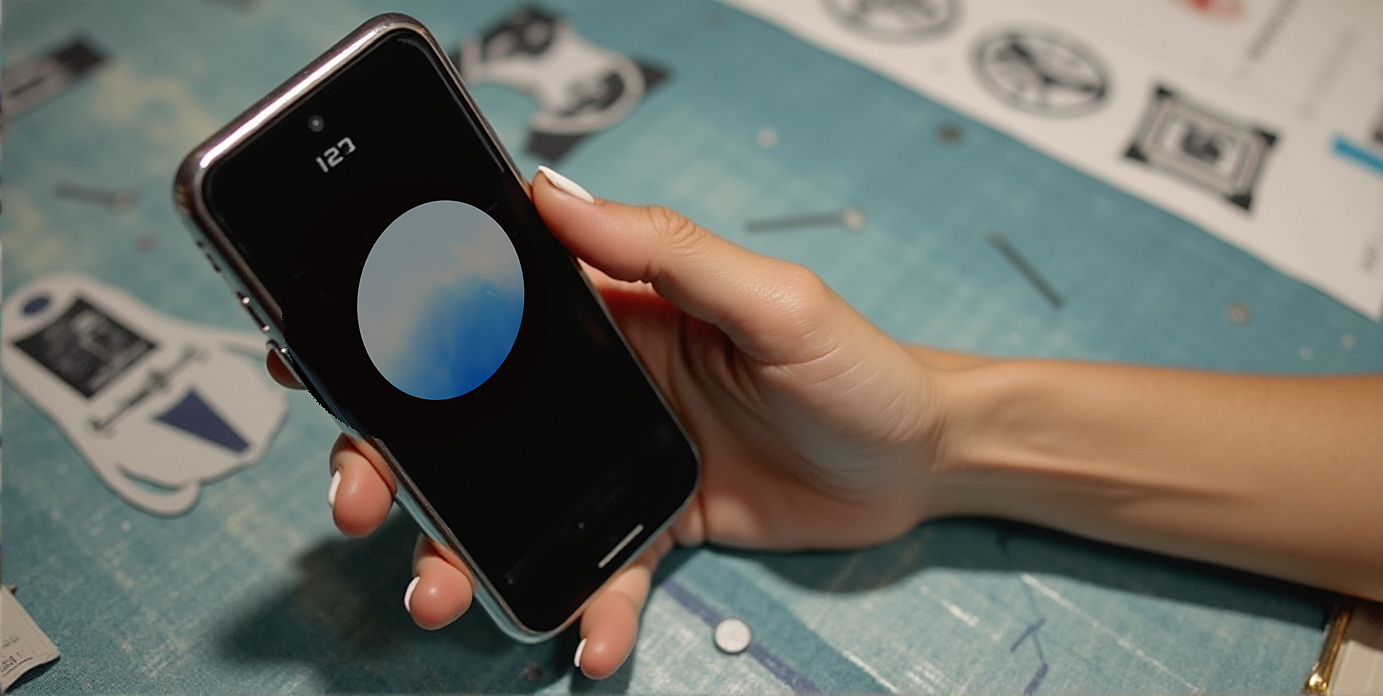This outdoor TV antenna may be massive, but that doesn’t mean it’s better for you

Antennas Direct Goliath review: Specs
Range: 70 miles
1080p reception: Yes
Size: 27.5 x 24 x 87 inches (H x W x L)
These days, there are tons of small, indoor, high-quality TV antennas. But the facts of physics still remain — with a little more power, you can capture more channels.
The Antennas Direct Goliath, which is being sold with the company’s Juice Plus preamp, is for those who want the most channels and the best reception — and who don’t mind installing an antenna that lives up to its name.
Like with any antenna, your mileage will vary depending on your location, nearby terrain, and what broadcasters are near you (even an antenna the size of the Goliath can’t get around mountains), but for those struggling to get reception, it just might get closer than any other antenna on the market.
Let’s get one thing out of the way right now — the Antennas Direct Goliath is, true to its name, giant. It measures in at a whopping 87 inches long, 27.5 inches high, and 24 inches wide, and that’s without any mounting posts. It was actually much lighter than I thought it would be given its size, but at nine pounds, it’s still certainly not lightweight.
While others have moved to different designs, the Goliath has a more “old-school” Yagi design, which is still effective and efficient when it comes to directional and long-range reception. To that end, the Goliath isn’t multi-directional like many modern antennas, so while there’s room for error, you’ll need to make sure it’s pointed in the right direction.
Antennas Direct Goliath review: Design
According to Antennas Direct, the Goliath is made to be durable enough to withstand wind speeds of up to 115 mph. The weather in my area wasn’t wild enough for me to test that, however it certainly does seem pretty strong.
As mentioned, the antenna ships with a ClearStream Juice Plus preamplifier, which itself is split into two parts: There’s the main unit, which should be installed near the Goliath (typically on the mounting post), and a power inserter, which plugs into the wall and can be located on the indoor side of the cable. The Juice Plus comes pre-installed in a heavy-duty weather-proof casing, so it too should be able to survive the elements — though perhaps water is a bigger concern for it than wind.
Is the Antenna Direct Goliath elegant? Well, no, not really. It’s not really meant to be. It’s imposing. Some might want something a little more petite than the Goliath, and if you prioritize design over power, then it’s perhaps not for you. But hey, at least it makes a statement on your roof.
Antennas Direct Goliath review: Setup
Setting up the Goliath is a little more involved than most other antennas. Before you can mount it, you’ll have to actually assemble it. The antenna comes in a series of poles, clips, and bolts, and it took me a good 30-45 minutes to put the thing together. It’s worth working in an area with a good amount of space, too. I decided to assemble it in my relatively small office, and found myself hitting walls with random poles in the process. Strike one.
Once you assemble it, you’ll need to mount it on the roof, and it’s worth noting that you might need a taller-than-average mounting post considering the antenna’s heft. I did not realize this would be necessary, and had to wait a day for a new mounting post to arrive before I could install it. Strike two.

The rest of the setup is relatively straightforward, but you’ll need to be a little more careful to complete installation. The antenna is large and very unwieldy, so make sure you’re safe and secure before trying to carry it up a ladder, for example. Once the antenna is on the roof and mounted to the post, you’ll mount the Juice Plus below it, connect a coaxial cable from the Juice Plus to the antenna, and then connect another coaxial cable that runs inside your home to the Juice Plus. Then you’ll need to plug in the power inserter, both to the wall and the coax wall jack, and then finally, run another coaxial cable to your TV.
If your setup is anything like mine, you already have a coaxial cable running through the walls, so you’ll need an additional three cables. The Juice Plus comes with two, which is handy.
If you’re keeping track, I never got to strike three. Considering that strike could have been falling off a ladder, I’m pretty glad I didn’t — but really, be careful up there, and don’t do anything silly without someone else nearby. If you’re smart, you’ll have someone else hand you the antenna instead of trying to carry it up a ladder yourself.
Antennas Direct Goliath review: Performance
The whole point of the Goliath is performance, and perform it does. But, it’s worth noting a few caveats. This is a unidirectional antenna. It has a 24-degree reception pattern, which is a pretty small slice of space — and as a result, it’s easy to come across online users who have opted for two Goliath’s instead of one. The antenna’s range, however, is a massive 70 miles, and it’s specifically designed for UHF frequencies from 470 to 608 MHz.
Before installing the Goliath, our home had a Televes DiNova Boss Mix antenna, which was left over from the previous tenants. Upon moving in, all we had to do was plug the TV into the coax wall jack and scan for channels. It was able to pick up 100 channels. After installing the Goliath and scanning for channels again, only 76 channels were found.
Now, there are a few reasons for this. For starters, as mentioned, the Goliath is very directional, and while the DiNova Boss Mix antenna that I had before is still somewhat directional, it has a much wider reception pattern that allows it to capture signals from a wider field of view. The Goliath has a longer range too, but between 50 and 70 miles, there aren’t many channels that I would be missing out on without the Goliath.

That said, the quality of the signal was very good on all of these channels. It easily picked up local affiliates and delivered crisp and detailed video for all of them. Subchannels in 480p looked about as good as you would expect from a 480p signal. This high quality largely has to do with some of the technologies built into the antenna. Antennas Direct says it’s effective at rejecting interfering signals from LTE and 5G towers, and indeed, I never really noticed a poor quality signal with this antenna. It picked up all of the channels that it could excellently. It’s just that it didn’t pick up all the channels that other antennas might.
All that to say, just because you have a big antenna, that doesn’t mean you’re going to get more channels or necessarily a much better signal. If you live in an area where broadcast stations are spread out a little and are decently close, then you might want to go for an antenna with a wider reception pattern instead.
Antennas Direct Goliath review: Verdict
The Antennas Direct Goliath is an impressively powerful antenna, but it’s not for everyone. If you need to capture signals from far-away broadcast stations within a relatively clustered area, it’s the antenna for the job, and for some, buying two will yield better results for two areas of broadcast stations.
But, check where the stations are broadcasting from before you buy an antenna like this, because its directionality will impact how much it can actually pick up — and you might find that a smaller antenna with a lower range and wider reception pattern is better for your needs.
That said, if you live in a rural area and need a long-range antenna with a focused reception pattern, the Goliath is an excellent option.
Source link










